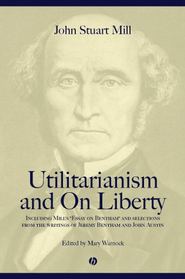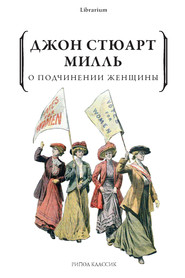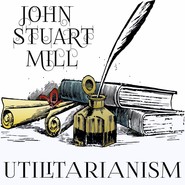По всем вопросам обращайтесь на: info@litportal.ru
(©) 2003-2024.
✖
Essays on some unsettled Questions of Political Economy
Настройки чтения
Размер шрифта
Высота строк
Поля
ESSAY IV.
ON PROFITS, AND INTEREST
The profits of stock are the surplus which remains to the capitalist after replacing his capital: and the ratio which that surplus bears to the capital itself, is the rate of profit.
This being the definition of profits, it might seem natural to adopt, as a sufficient theory in regard to the rate of profit, that it depends upon the productive power of capital. Some countries are favoured beyond others, either by nature or art, in the means of production. If the powers of the soil, or of machinery, enable capital to produce what is necessary for replacing itself, and twenty per cent more, profits will be twenty per cent; and so on.
This, accordingly, is a popular mode of speaking on the subject of profits; but it has only the semblance, not the reality, of an explanation. The "productive power of capital," though a common, and, for some purposes, a convenient expression, is a delusive one. Capital, strictly speaking, has no productive power. The only productive power is that of labour; assisted, no doubt, by tools, and acting upon materials. That portion of capital which consists of tools and materials, may be said, perhaps, without any great impropriety, to have a productive power, because they contribute, along with labour, to the accomplishment of production. But that portion of capital which consists of wages, has no productive power of its own. Wages have no productive power; they are the price of a productive power. Wages do not contribute, along with labour, to the production of commodities, no more than the price of tools contributes along with the tools themselves. If labour could be had without purchase, wages might be dispensed with. That portion of capital which is expended in the wages of labour, is only the means by which the capitalist procures to himself, in the way of purchase, the use of that labour in which the power of production really resides.
The proper view of capital is, that anything whatever, which a person possesses, constitutes his capital, provided he is able, and intends, to employ it, not in consumption for the purpose of enjoyment, but in possessing himself of the means of production, with the intention of employing those means productively. Now the means of production are labour, implements, and materials. The only productive power which anywhere exists, is the productive power of labour, implements, and materials.
We need not, on this account, altogether proscribe the expression, "productive power of capital;" but we should carefully note, that it can only mean the quantity of real productive power which the capitalist, by means of his capital, can command. This may change, though the productive power of labour remains the same. Wages, for example, may rise; and then, although all the circumstances of production remain exactly as they were before, the same capital will yield a less return, because it will set in motion a less quantity of productive labour.
We may, therefore, consider the capital of a producer as measured by the means which he has of possessing himself of the different essentials of production: namely, labour, and the various articles which labour requires as materials, or of which it avails itself as aids.
The ratio between the price which he has to pay for these means of production, and the produce which they enable him to raise, is the rate of his profit. If he must give for labour and tools four-fifths of what they will produce, the remaining fifth will constitute his profit, and will give him a rate of one in four, or twenty-five per cent, on his outlay.
It is necessary here to remark, what cannot indeed by any possibility be misunderstood, but might possibly be overlooked in cases where attention to it is indispensable, viz., that we are speaking now of the rate of profit, not the gross profit. If the capital of the country is very great, a profit of only five per cent upon it may be much more ample, may support a much larger number of capitalists and their families in much greater affluence, than a profit of twenty-five per cent on the comparatively small capital of a poor country. The gross profit of a country is the actual amount of necessaries, conveniences, and luxuries, which are divided among its capitalists: but whether this be large or small, the rate of profit may be just the same. The rate of profit is the proportion which the profit bears to the capital; which the surplus produce after replacing the outlay, bears to the outlay. In short, if we compare the price paid for labour and tools with what that labour and those tools will produce, from this ratio we may calculate the rate of profit.
As the gross profit may be very different though the rate of profit be the same; so also may the absolute price paid for labour and tools be very different, and yet the proportion between the price paid and the produce obtained may be just the same. For greater clearness, let us omit, for the present, the consideration of tools, materials, &c, and conceive production as the result solely of labour. In a certain country, let us suppose, the wages of each labourer are one quarter of wheat per year, and 100 men can produce, in one year, 120 quarters. Here the price paid for labour is to the produce of that labour as 100 to 120, and profits are 20 per cent. Suppose now that, in another country, wages are just double what they are in the country before supposed; namely, two quarters of wheat per year, for each labourer. But suppose, likewise, that the productive power of labour is double what it is in the first country; that by the greater fertility of the soil, 100 men can produce 240 quarters, instead of 120 as before. Here it is obvious, that the real price paid for labour is twice as great in the one country as in the other; but the produce being also twice as great, the ratio between the price of labour and the produce of labour is still exactly the same: an outlay of 200 quarters gives a return of 240 quarters, and profits, as before, are 20 per cent.
Profits, then (meaning not gross profits, but the rate of profit), depend (not upon the price of labour, tools, and materials – but) upon the ratio between the price of labour, tools, and materials, and the produce of them: upon the proportionate share of the produce of industry which it is necessary to offer, in order to purchase that industry and the means of setting it in motion.
We have hitherto spoken of tools, buildings, and materials, as essentials of production, co-ordinate with labour, and equally indispensable with it. This is true; but it is also true that tools, buildings, and materials, are themselves the produce of labour; and that the only cause (cases of monopoly excepted) of their having any value, is the labour which is required for their production.
If tools, buildings, and materials were the spontaneous gifts of nature, requiring no labour either in order to produce or to appropriate them; and if they were thus bestowed upon mankind in indefinite quantity, and without the possibility of being monopolized; they would still be as useful, as indispensable as they now are; but since they could, like air and the light of the sun, be obtained without cost or sacrifice, they would form no part of the expenses of production, and no portion of the produce would be required to be set aside in order to replace the outlay made for these purposes. The whole produce, therefore, after replacing the wages of labour, would be clear profit to the capitalist.
Labour alone is the primary means of production; "the original purchase-money which has been paid for everything." Tools and materials, like other things, have originally cost nothing but labour; and have a value in the market only because wages have been paid for them. The labour employed in making the tools and materials being added to the labour afterwards employed in working up the materials by aid of the tools, the sum total gives the whole of the labour employed in the production of the completed commodity. In the ultimate analysis, therefore, labour appears to be the only essential of production. To replace capital, is to replace nothing but the wages of the labour employed. Consequently, the whole of the surplus, after replacing wages, is profits. From this it seems to follow, that the ratio between the wages of labour and the produce of that labour gives the rate of profit. And thus we arrive at Mr. Ricardo's principle, that profits depend upon wages; rising as wages fall, and falling as wages rise.
To protect this proposition (the most perfect form in which the law of profits seems to have been yet exhibited) against misapprehension, one or two explanatory remarks are required.
If by wages, be meant what constitutes the real affluence of the labourer, the quantity of produce which he receives in exchange for his labour; the proposition that profits vary inversely as wages, will be obviously false. The rate of profit (as has been already observed and exemplified) does not depend upon the price of labour, but upon the proportion between the price of labour and the produce of it. If the produce of labour is large, the price of labour may also be large without any diminution of the rate of profit: and, in fact, the rate of profit is highest in those countries (as, for instance, North America) where the labourer is most largely remunerated. For the wages of labour, though so large, bear a less proportion to the abundant produce of labour, there than elsewhere.
But this does not affect the truth of Mr. Ricardo's principle as he himself understood it; because an increase of the labourer's real comforts was not considered by him as a rise of wages. In his language wages were only said to rise, when they rose not in mere quantity but in value. To the labourer himself (he would have said) the quantity of his remuneration is the important circumstance: but its value is the only thing of importance to the person who purchases his labour.
The rate of profits depends not upon absolute or real wages, but upon the value of wages.
If, however, by value, Mr. Ricardo had meant exchangeable value, his proposition would still have been remote from the truth. Profits depend no more upon the exchangeable value of the labourer's remuneration, than upon its quantity. The truth is, that by the exchangeable value is meant the quantity of commodities which the labourer can purchase with his wages; so that when we say the exchangeable value of wages, we say their quantity, under another name.
Mr. Ricardo, however, did not use the word value in the sense of exchangeable value.
Occasionally, in his writings, he could not avoid using the word as other people use it, to denote value in exchange. But he more frequently employed it in a sense peculiar to himself, to denote cost of production; in other words, the quantity of labour required to produce the article; that being his criterion of cost of production. Thus, if a hat could be made with ten days' labour in France and with five days' labour in England, he said that the value of a hat was double in France of what it was in England. If a quarter of corn could be produced a century ago with half as much labour as is necessary at present, Mr. Ricardo said that the value of a quarter of corn had doubled.
Mr. Ricardo, therefore, would not have said that wages had risen, because a labourer could obtain two pecks of flour instead of one, for a day's labour; but if last year he received, for a day's labour, something which required eight hours' labour to produce it, and this year something which requires nine hours, then Mr. Ricardo would say that wages had risen. A rise of wages, with Mr. Ricardo, meant an increase in the cost of production of wages; an increase in the number of hours' labour which go to produce the wages of a day's labour; an increase in the proportion of the fruits of labour which the labourer receives for his own share; an increase in the ratio between the wages of his labour and the produce of it. This is the theory: the reasoning, of which it is the result, has been given in the preceding paragraphs.
Some of Mr. Ricardo's followers, or more properly, of those who have adopted in most particulars the views of political economy which his genius was the first to open up, have given explanations of Mr. Ricardo's doctrine to nearly the same effect as the above, but in rather different terms. They have said that profits depend not on absolute, but on proportional wages: which they expounded to mean the proportion which the labourers en masse receive of the total produce of the country.
It seems, however, to be rather an unusual and inconvenient use of language to speak of anything as depending upon the wages of labour, and then to explain that by wages of labour you do not mean the wages of an individual labourer, but of all the labourers in the country collectively. Mankind will never agree to call anything a rise of wages, except a rise of the wages of individual labourers, and it is therefore preferable to employ language tending to fix attention upon the wages of the individual. The wages, however, on which profits are said to depend, are undoubtedly proportional wages, namely, the proportional wages of one labourer: that is, the ratio between the wages of one labourer, and (not the whole produce of the country, but) the amount of what one labourer can produce; the amount of that portion of the collective produce of the industry of the country, which may be considered as corresponding to the labour of one single labourer. Proportional wages, thus understood, may be concisely termed the cost of production of wages; or, more concisely still, the cost of wages, meaning their cost in the "original purchase money," labour.
We have now arrived at a distinct conception of Mr. Ricardo's theory of profits in its most perfect state. And this theory we conceive to be the basis of the true theory of profits. All that remains to do is to clear it from certain difficulties which still surround it, and which, though in a greater degree apparent than real, are not to be put aside as wholly imaginary.
Though it is true that tools, materials, and buildings (it is to be wished that there were some compact designation for all these essentials of production taken together,) are themselves the produce of labour, and are only on that account to be ranked among the expenses of production; yet the whole of their value is not resolvable into the wages of the labourers by whom they were produced. The wages of those labourers were paid by a capitalist, and that capitalist must have the same profit upon his advances as any other capitalist; when, therefore, he sells the tools or materials, he must receive from the purchaser not only the reimbursement of the wages he has paid, but also as much more as will afford him the ordinary rate of profit. And when the producer, after buying the tools and employing them in his own occupation, comes to estimate his gains, he must set aside a portion of the produce to replace not only the wages paid both by himself and by the tool-maker, but also the profits of the tool-maker, advanced by himself out of his own capital.
It is not correct, therefore, to state that all which the capitalist retains after replacing wages forms his profit. It is true the whole return to capital is either wages or profits; but profits do not compose merely the surplus after replacing the outlay; they also enter into the outlay itself. Capital is expended partly in paying or reimbursing wages, and partly in paying the profits of other capitalists, whose concurrence was necessary in order to bring together the means of production.
If any contrivance, therefore, were devised by which that part of the outlay which consists of previous profits could be either wholly or partially dispensed with, it is evident that more would remain as the profit of the immediate producer; while, as the quantity of labour necessary to produce a given quantity of the commodity would be unaltered, as well as the quantity of produce paid for that labour, it seems that the ratio between the price of labour and its produce would be the same as before; that the cost of production of wages would be the same, proportional wages the same, and yet profits different.
To illustrate this by a simple instance, let it be supposed that one-third of the produce is sufficient to replace the wages of the labourers who have been immediately instrumental in the production; that another third is necessary to replace the materials used and the fixed capital worn out in the process; while the remaining third is clear gain, being a profit of 50 per cent. Suppose, for example, that 60 agricultural labourers, receiving 60 quarters of corn for their wages, consume fixed capital and seed amounting to the value of 60 quarters more, and that the result of their operations is a produce of 180 quarters. When we analyse the price of the seed and tools into its elements, we find that they must have been the produce of the labour of 40 men: for the wages of those 40, together with profit at the rate previously supposed (50 per cent) make up 60 quarters. The produce, therefore, consisting of 180 quarters is the result of the labour altogether of 100 men: namely, the 60 first mentioned, and the 40 by whose labour the fixed capital and the seed were produced.
Let us now suppose, by way of an extreme case, that some contrivance is discovered, whereby the purposes to which the second third of the produce had been devoted, may be dispensed with altogether: that some means are invented by which the same amount of produce may be procured without the assistance of any fixed capital, or the consumption of any seed or material sufficiently valuable to be worth calculating. Let us, however, suppose that this cannot be done without taking on a number of additional labourers, equal to those required for producing the seed and fixed capital; so that the saving shall be only in the profits of the previous capitalists. Let us, in conformity with this supposition, assume that in dispensing with the fixed capital and seed, value 60 quarters, it is necessary to take on 40 additional labourers, receiving a quarter of corn each, as before.
The rate of profit has evidently risen. It has increased from 50 per cent to 60 per cent. A return of 180 quarters could not before be obtained but by an outlay of 120 quarters; it can now be obtained by an outlay of no more than 100.
Here, therefore, is an undeniable rise of profits. Have wages, in the sense above attached to them, fallen or not? It would seem not.
The produce (180 quarters) is still the result of the same quantity of labour as before, namely, the labour of 100 men. A quarter of corn, therefore, is still, as before, the produce of 10/18 of a man's labour for a year. Each labourer receives, as before, one quarter of corn; each, therefore, receives the produce of 10\18 of a year's labour of one man, that is, the same cost of production; each receives 10/18 of the produce of his own labour, that is, the same proportional wages; and the labourers collectively still receive the same proportion, namely 10/18, of the whole produce.
The conclusion, then, cannot be resisted, that Mr. Ricardo's theory is defective: that the rate of profits does not exclusively depend upon the value of wages, in his sense, namely, the quantity of labour of which the wages of a labourer are the produce; that it does not exclusively depend upon proportional wages, that is, upon the proportion which the labourers collectively receive of the whole produce, or the ratio which the wages of an individual labourer bear to the produce of his individual labour.
Those political economists, therefore, who have always dissented from Mr. Ricardo's doctrine, or who, having at first admitted, ended by discarding it, were so far in the right; but they committed a serious error in this, that, with the usual one-sidedness of disputants, they knew no medium between admitting absolutely and dismissing entirely; and saw no other course than utterly to reject what it would have been sufficient to modify.
It is remarkable how very slight a modification will suffice to render Mr. Ricardo's doctrine completely true. It is even doubtful whether he himself, if called upon to adapt his expressions to this peculiar case, would not have so explained his doctrine as to render it entirely unobjectionable.
It is perfectly true, that, in the example already made use of, a rise of profits takes place, while wages, considered in respect to the quantity of labour of which they are the produce, have not varied at all. But though wages are still the produce of the same quantity of labour as before, the cost of production of wages has nevertheless fallen; for into cost of production there enters another element besides labour.
We have already remarked (and the very example out of which the difficulty arose presupposes it) that the cost of production of an article consists generally of two parts, – the wages of the labour employed, and the profits of those who, in any antecedent stage of the production, have advanced any portion of those wages. An article, therefore, may be the produce of the same quantity of labour as before, and yet, if any portion of the profits which the last producer has to make good to previous producers can be economized, the cost of production of the article is diminished.
Now, in our example, a diminution of this sort is supposed to have taken place in the cost of production of corn. The production of that article has become less costly, in the ratio of six to five. A quantity of corn, the means of producing which could not previously have been secured but at an expense of 120 quarters, can now be produced by means which 100 quarters are sufficient to purchase.
But the labourer is supposed to receive the same quantity of corn as before. He receives one quarter. The cost of production of wages has, therefore, fallen one-sixth. A quarter of corn, which is the remuneration of a single labourer, is indeed the produce of the same quantity of labour as before; but its cost of production is nevertheless diminished. It is now the produce of 10/18 of a man's labour, and nothing else; whereas formerly it required for its production the conjunction of that quantity of labour with an expenditure, in the form of reimbursement of profit, amounting to one-fifth more.
If the cost of production of wages had remained the same as before, profits could not have risen. Each labourer received one quarter of corn; but one quarter of corn at that time was the result of the same cost of production, as 1 1/5 quarter now. In order, therefore, that each labourer should receive the same cost of production, each must now receive one quarter of corn, plus one-fifth. The labour of 100 men could not be purchased at this price for less than 120 quarters; and the produce, 180 quarters, would yield only 50 per cent, as first supposed [7 - It would be easy to go over in the same manner any other case. For instance, we may suppose, that, instead of dispensing with the whole of the fixed capital, material, &c, and taking on labourers in equal number to those by whom these were produced, half only of the fixed capital and material is dispensed with; so that, instead of 60 labourers and a fixed capital worth 60 quarters of corn, we have 80 labourers and a fixed capital worth 30. The numerical statement of this case is more intricate than that in the text, but the result is not different.].
It is, therefore, strictly true, that the rate of profits varies inversely as the cost of production of wages. Profits cannot rise, unless the cost of production of wages falls exactly as much; nor fall, unless it rises.
The proof of this position has been stated in figures, and in a particular case: we shall now state it in general terms, and for all cases.
We have supposed, for simplicity, that wages are paid in the finished commodity. The agricultural labourers, in our example, were paid in corn, and if we had called them weavers, we should have supposed them to be paid in cloth. This supposition is allowable, for it is obviously of no consequence, in a question of value, or cost of production, what precise article we assume as the medium of exchange. The supposition has, besides, the recommendation of being conformable to the most ordinary state of the facts; for it is by the sale of his own finished article that each capitalist obtains the means of hiring labourers to renew the production; which is virtually the same thing as if, instead of selling the article for money and giving the money to his labourers, he gave the article itself to the labourers, and they sold it for their daily bread.
Assuming, therefore, that the labourer is paid in the very article he produces, it is evident that, when any saving of expense takes place in the production of that article, if the labourer still receives the same cost of production as before, he must receive an increased quantity, in the very same ratio in which the productive power of capital has been increased. But, if so, the outlay of the capitalist will bear exactly the same proportion to the return as it did before; and profits will not rise.
The variations, therefore, in the rate of profits, and those in the cost of production of wages, go hand in hand, and are inseparable. Mr. Ricardo's principle, that profits cannot rise unless wages fall, is strictly true, if by low wages be meant not merely wages which are the produce of a smaller quantity of labour, but wages which are produced at less cost, reckoning labour and previous profits together. But the interpretation which some economists have put upon Mr. Ricardo's doctrine, when they explain it to mean that profits depend upon the proportion which the labourers collectively receive of the aggregate produce, will not hold at all; for that, in our first example, remained the same, and yet profits rose.
The only expression of the law of profits, which seems to be correct, is, that they depend upon the cost of production of wages. This must be received as the ultimate principle.
From this may be deduced all the corollaries which Mr. Ricardo and others have drawn from his theory of profits as expounded by himself. The cost of production of the wages of one labourer for a year, is the result of two concurrent elements or factors, – viz., 1st, the quantity of commodities which the state of the labour market affords to him; 2ndly, the cost of production of each of those commodities. It follows, that the rate of profits can never rise but in conjunction with one or other of two changes, – 1st, a diminished remuneration of the labourer; or, 2ndly, an improvement in production, or an extension of commerce, by which any of the articles habitually consumed by the labourer may be obtained at smaller cost. (If the improvement be in any article which is not consumed by the labourer, it merely lowers the price of that article, and thereby benefits capitalists and all other people so far as they are consumers of that particular article, and may be said to increase gross profit, but not the rate of profit.)
So, on the other hand, the rate of profit cannot fall, unless concurrently with one of two events: 1st, an improvement in the labourer's condition; or, 2ndly, an increased difficulty of producing or importing some article which the labourer habitually consumes. The progress of population and cultivation has a tendency to lower profits through the latter of these two channels, owing to the well known law of the application of capital to land, that a double capital does not caeteris paribus yield a double produce. There is, therefore, a tendency in the rate of profits to fall with the progress of society. But there is also an antagonist tendency of profits to rise, by the successive introduction of improvements in agriculture, and in the production of those manufactured articles which the labourers consume. Supposing, therefore, that the actual comforts of the labourer remain the same, profits will fall or rise, according as population, or improvements in the production of food and other necessaries, advance fastest.
















